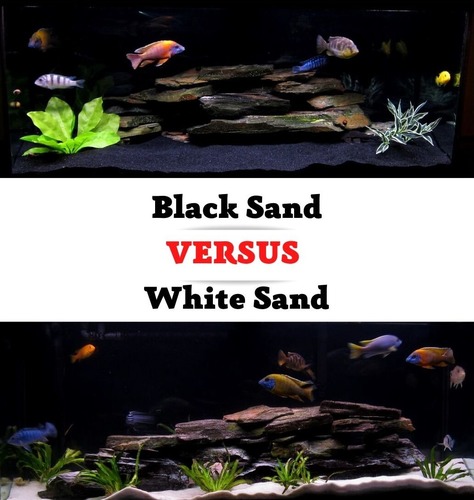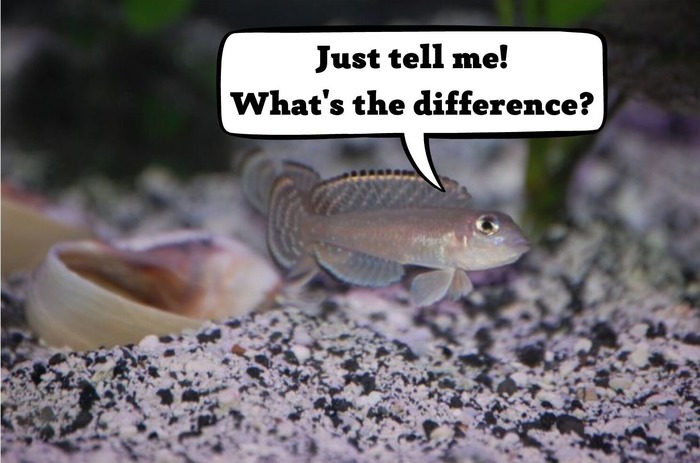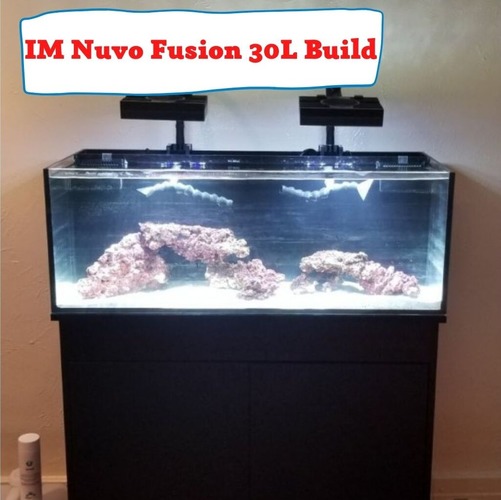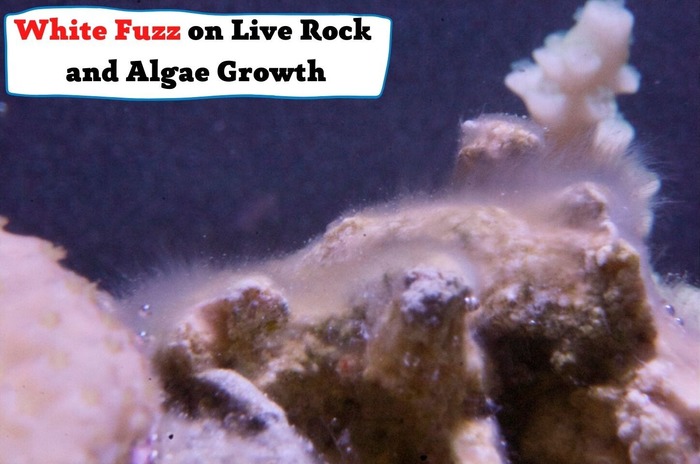
For anyone who owns a fish tank, or is thinking of establishing an aquarium, the one element that they will be particularly concerned about is finding the right sand for their aquarium.
Aquarium sand is a substrate that forms the bed of a fish tank. It is made from either a single or a collection of various organic and artificial components. Where each type of sand has several options available for the size of the grains, their properties, and even their color.
This is why finding and choosing the right aquarium sand, amidst so many options, is difficult.
For this reason, this article will talk about the significance of aquarium sand, its use, and its features. It will also answer some commonly asked questions users have, near its end.
Aquarium Sand and its Significance
Some fish types originate from sandy areas. Using aquarium sand as their bed increases the familiarity and comfort they can have in the tank, allowing them to better adjust to their surroundings.
Likewise, some species can only breed in sandy environments. For such fish types to thrive and grow, the fish tanks need to recreate their similar habitat by using sand as an alternative substrate.
Aquarium sand and its significance are not only limited to the fishes living inside. It is also viable for aquatic plant growth in the aquarium. These sands carry organic nutrients that can help the plants inside them to develop more soundly. The texture of the sand creates a strong base to hold the roots of the aqua plant, where its bacterial properties, supported by the small size of its grain, enhance its development.
Additionally, having an aquarium with good bacterial growth is also a valuable resource because it manages the pollution level in the tank. It allows the environment in the fish tank to stay conducive for its use.
Sand generally has the natural characteristic to match the flow and frequency of the water it lies in. For this purpose, it is perfect for the needs of a fish tank.
White Sand vs. Black Sand: What’s the difference?

Many individuals believe that finding suitable sand for their aquarium is not a cause of concern as all sands are equally usable. Sands however are different, and certain sands do not adjust well with the water in the tank. Others tend to be detrimental to the species living inside the aquarium.
Let’s begin by discussing the two fundamental types of sands, each defined by its color: White and Black.
White Sand
White sand is the most commonly used type of sand. It is mostly light, white-colored in its hue, and can commonly be seen used with fresh water. It adds an element of brightness inside the aquarium, giving it a more radiant visual.
However, the difference between the two particles of aquarium sand does not end with color and appeal.
The particles of white sand are generally assembled to have an uncultivated bio-active feature.
They also ward off algae, dirt, and debris from gathering over the surface, preventing possible functional issues within the tank.
Where light-weighted, white sand can also act as a natural process to filter the bed, however, some grain of sand may also float up the surface of the tank.
Additionally, this sand is formed from bacteria. This helps in eliminating wastage like nitrite from inside the tank, and thereby stabilizes the environment of the aquarium.
Black Sand
This dark-colored sand can be used where the user wishes the aquarium to have a more complex, regal look. This color should correspond with the taste and discretion of the user and the species inside.
Black sand has permeable properties. It can effortlessly soak and deliver nutrients, minerals, water, and other needed elements more effectively.
Not only can they deliver more swiftly, but these dark-colored sand are rich in nutrients and sturdy enough to hold the aquarium plants in place.
Black sand also contains elements that promote bacteria growth. This helps in reducing the amount of unhealthy waste in the tank. This is a similarity found in both types of sand.
However, black sand may create a thin layer on the surface of the tank, clouding the clarity due to the darkness in its color.
In both cases, care should be taken to ensure that no artificial or chemical elements such as dye are used in the sand to give it color. This color can usually be toxic and it can be harmful to the wellbeing of the species inside the tank, especially where the fish type sifts and consumes the sand to feed itself.
Features to consider when Buying Sand for your Aquarium

When deciding on what sand should be selected, many valid points should be taken into account before selecting the right one.
Species in the Fish Tank
Sand used in the aquarium should match the requirements of the species living in the tank. Different species have different needs. Goldfish and African cichlid, for example, prefer to sift in the sand to feed themselves. This suggests that they will consume anything that they can sift, even the grains of the sand, which may clog if they are not of the right size.
The Size of the Aquarium
The amount of sand required for the fish tank will depend on the size of the aquarium. The size, shape, and weight of the grains will also play a part in determining the quantity needed to fill the tank. Denser sand, such as coarse sand will take up more space in the tank unlike finer sand particles, which will require a heavier portion instead.
The thickness of your aquarium sand should be about 3 or 1 inches in depth. This level of a drop is sufficient enough to enhance the visuals, hold the aquarium plants in place and provide the required aeration for the fishes in the tank.
However, the sand bed can also be as deep as 4 to 6 inches. How much sand a tank should generally have is more a question of preference. It can be personalized with experience or online sand calculators can also be used as an alternative to estimate the required depth of sand for the tank.
Type of Tank
Another thing to consider is the purpose of the tank before deciding on the sand to use. The user needs to see if the aquarium is specifically reserved for fishes, or it needs the sand to support aqua plantation as well. This will enable you to select a variety that is rich in nutrients and supports better bacterial growth as an example.
Size of Grain
Aquarium sand, as discussed, comes in several sizes and forms. Each of its grains can be small, medium, or long.
Larger grains can impregnate the air more effectively into the sand. However, they also increase circumstances of high debris accumulation on the surface bed. They are, therefore, more suitable for species that prefer burrowing into the sand.
Whereas, sand shorter in size, makes it easier for the waste to be siphoned out of the tank. They also don’t collect dirt as easily, making their maintenance easier. These smaller particles frequently confine the space, making the tank feel compact and restricted.
For this reason, many individuals may prefer medium-sized aquarium sand for their tanks. Finding a size that benefits from the advantages of both the long and short forms.
pH levels
The pH level of the aquarium sand should be neutral. The properties of the sand should not affect and alter the natural pH of the water in the tank. Changing the original composition of the water will increase the density of carbon in the water of the aquarium, which can prove to be harmful to the environment within the tank.
Silicate
Silicate is an element that is often found in sand sold on the market. This component boosts the development of brown algae in the tank. So, to restrict its development, the coating of the sand should be checked carefully before the sand is selected.
Color
Buyers would also need to think about the aesthetical impact of the sand on the visuals of the aquarium. Aquarium sand has, as discussed, a range available for colors: both light and dark. This color should be set in contrast to the color and visuals of the type of fish inside the tank so that the fish can be seen in their complete splendor.
Quality of Sand
Since aquarium sand can be consumed by the breed of fish in the tank, the quality of the sand must be checked. The grains of the sand used in the aquarium should not be toxic and harmful to the species inside.
Frequently Asked Questions
A few most common questions asked concerning aquarium sand have been gathered and answered here for your ease.
Do fish eat sand?
Yes, some fish sift through the sand as they look for food. It also helps boost the digestion of the fish.
Can my sandbed turn black?
Where the tank is not cleaned appropriately, the accumulation of dirt makes everything inside the tank look black. This is a result of poor maintenance of the tank bringing about microbial activity and hence the black color.
Can Sand and Gravel be used together?
Yes, they can be used together. However, the sand will penetrate beneath the gravel and create blockages for the water system to flow where under-gravel filters are used.
Is there a way to remove fish excretion from the sand?
This can be done through vacuuming or using an airstone to blow and stir the poop away from the bed. Letting the poop float will allow the filter to automatically extract it away from the tank.
Conclusion
Finding and selecting the proper aquarium sand for your fish tank is a crucial decision to make, both for you and the species living inside. It can change the looks of the tank. The health of the species. And prevent you from wasting money, time, and care invested in the settlement and maintenance of the tank.
- Turtle Eats Fish—Why? And How Can You Stop This? - March 23, 2022
- Can Turtles Eat Broccoli? Learning about the Turtle’s Diet - March 16, 2022
- Tank Size Question. 75 vs 90 Gallon Aquarium for Your Home - January 20, 2022




